The Warrior class is defined by its weapons. Comprised largely of attack reactions and non-attack actions that buff and modify your weapon swings, the Warrior card pool dictates a strategy of presenting the attack without giving away all the details of what it's truly threatening. It's the closest you'll get to bluffing in FAB, and its kept its premiere hero Dorinthea relevant (but not dominant) for 9 sets now.
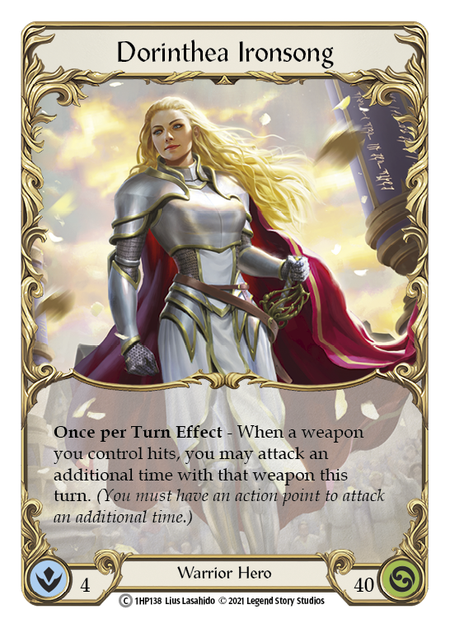
With its strategy firmly centered around the weapon, it's not surprising that Warrior has more weapon cards than any other class. Starting with 2-handed and 1-handed swords, the armory has expanded to include axes and even a dagger. All told, Warriors have 7 weapon loadouts - without counting the Hatchets of Body and Mind as separate weapons, and excluding the Light-exclusive Raydn.
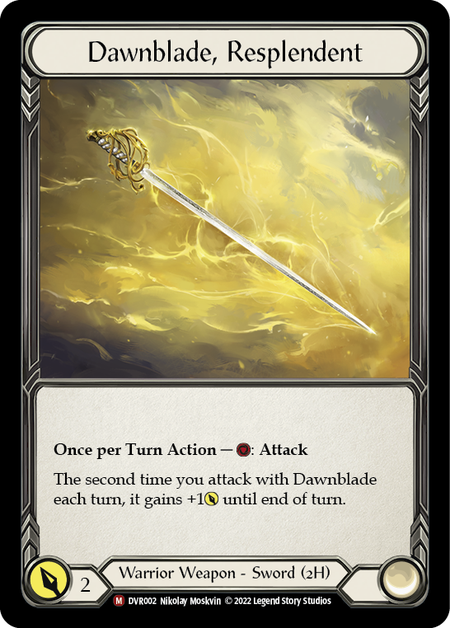

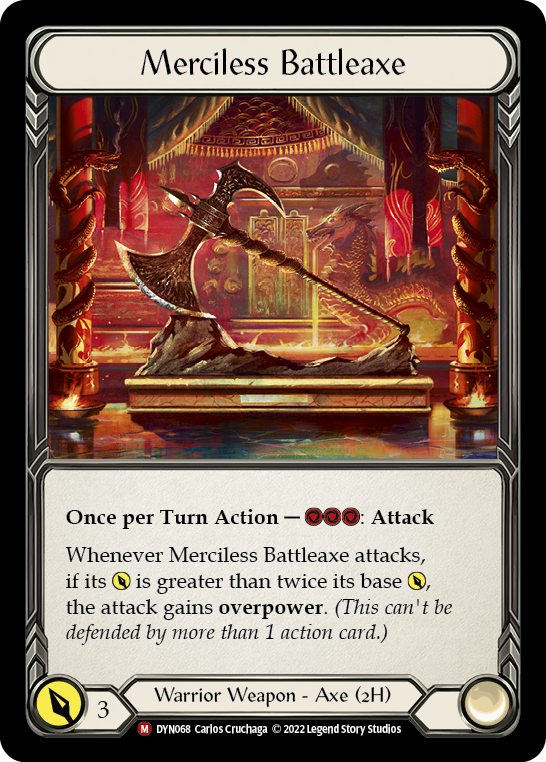
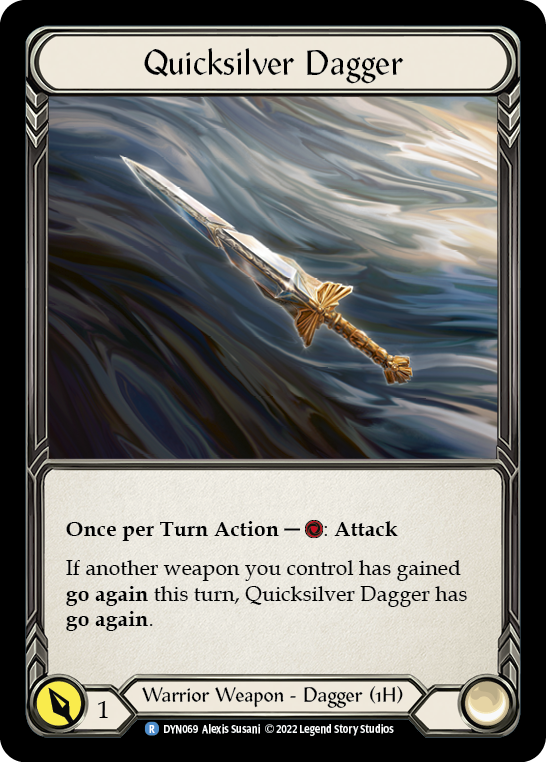
With all these options, Warriors should be diverse heroes with extensive sideboard options available to pivot their strategies in response to their enemies. But that has not proven to be the case. Excepting the fringe efforts of a large community willing to try anything, Dorinthea has remained tied to Dawnblade (with a small Hatchets following), while Kassai and Boltyn stand by Cintari Sabers (with a small Raydn following for the Light Warrior).
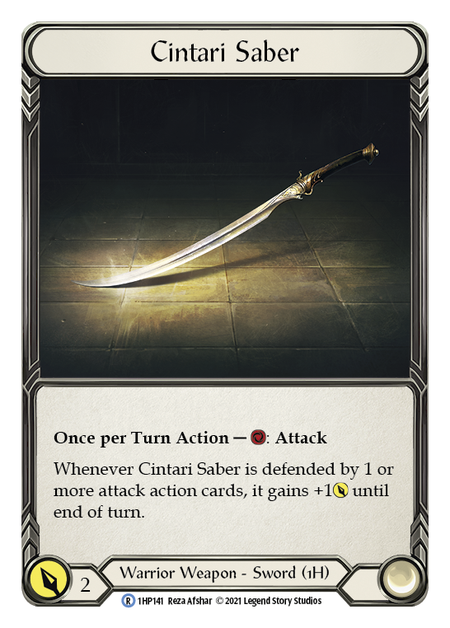
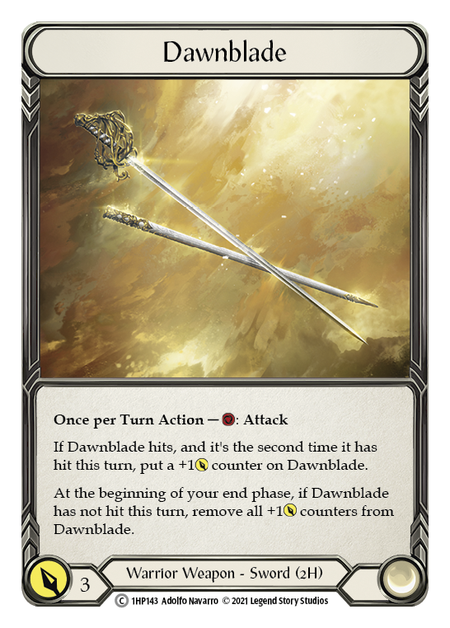
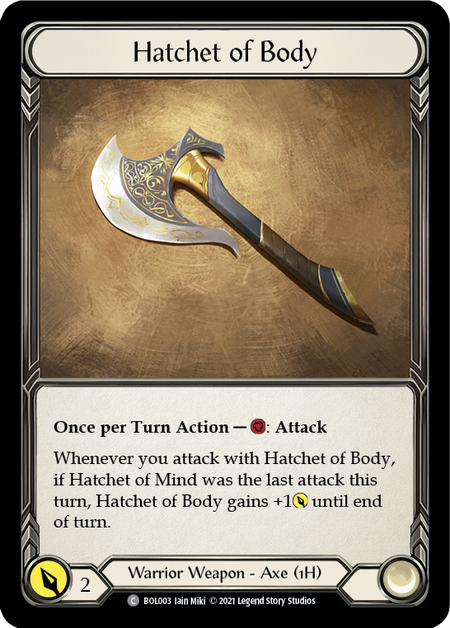
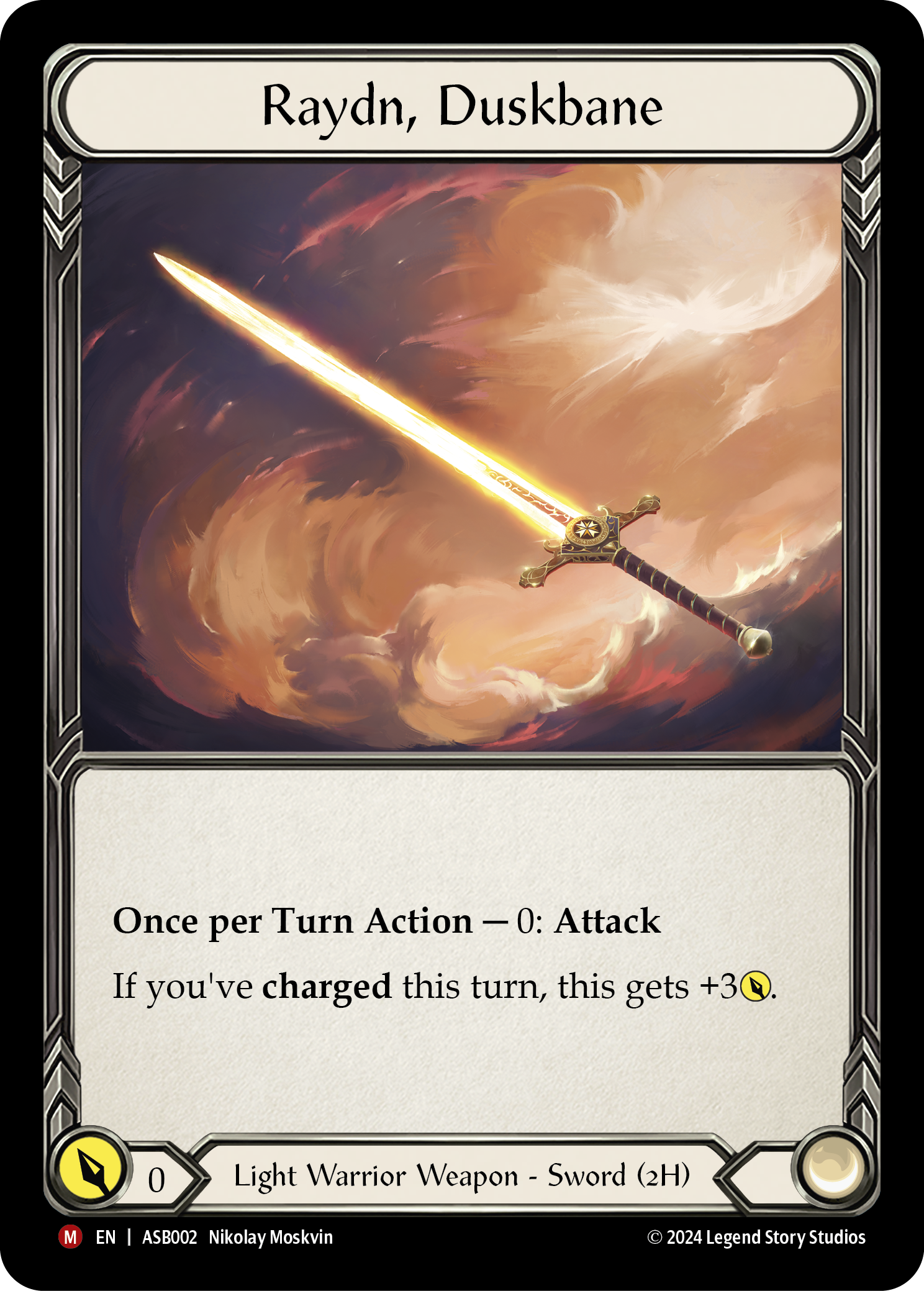
While hope remains for more diversity in Boltyn builds when next we expand the Light card pool (in July's Dusk Till Dawn), Dorinthea's prospects feel pretty bleak at this point. We've seen Warrior support in 5 sets now, and still the Dawnblade remains the default. Why has the original remained the best in class? And what would it take to provide a truly viable alternative?
Let's Do The Numbers
As is so often the case with FAB, Dawnblade's superiority can be proven with math.
Pitch 1 - Dawnblade for 3
Pitch 1 - Jubeel for 3
Pitch 1 - Dawnblade, Resplendent for 2
Pitch 1 - Cintari Saber for 2
Pitch 1 - Hatchet for 2
Pitch 1 - Quicksilver Dagger for 1
Pitch 3 - Merciless Battleaxe for 3
At its most stripped down - after you've been forced to defend with 3 cards from hand and only have a resource card to work with - Dawnblade is rivaled only by Jubeel for damage output. This represents the minimum floor of your weapon, and already we see that the Dawnblade has the highest floor.
Of course, we're happy to accept a lower floor if our ceiling is higher. Since Dorinthea lets us swing a weapon twice if it hits the first time, let's add a simple 'go again' buff from Hit and Run this time.
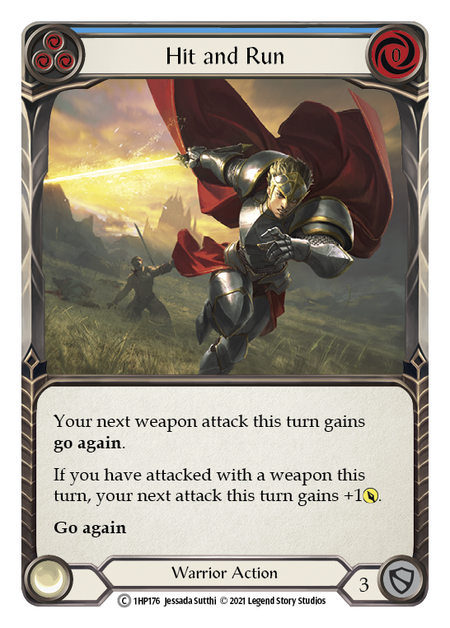
Hit and Run - Pitch 2 - Dawnblade for 3 - Dawnblade for 3 = 6
Hit and Run - Pitch 2 - Jubeel for 3 - Jubeel for 3 = 6
Hit and Run - Pitch 2 - Dawnblade, Resplendent for 2 - Dawnblade, Resplendent for 3 = 5
Hit and Run - Pitch 2 - Cintari Saber for 2 - Cintari Saber for 2 = 4
Hit and Run - Pitch 2 - Hatchet of Body for 2 - Hatchet of Mind for 3 = 5
Hit and Run - Pitch 3 - Cintari Saber for 2 - Quicksilver Dagger for 1 - Cintari Saber for 2 = 5
Hit and Run - Pitch 3 - Merciless Battleaxe for 3 - Pitch 3 - Merciless Battleaxe for 3 = 6
Dawnblade and Jubeel continue to out-perform the other weapons at absolute baselines: with no blocks and no modifiers. With the exception of the Merciless Battleaxe (which is looking absolutely awful at 3 cards and 6 resources for 6 damage), these are 2-card hands with 1 card played and 1 yellow (or blue) pitched. Notably, these are also fairly below-rate in the economy of Flesh and Blood; we're looking to get 4 points of value out of any card we attack with, and playing Hit and Run only got us 3 more.
But there are some x-factors we haven't brought up yet, and of course that's what makes the deck work across a long game. If unblocked, Dawnblade's 2 attacks will give it a +1 counter, so next turn this same Hit and Run play would threaten 8 damage. Jubeel's 1st hit would net you a Spellbane Aegis token, which prevents 1 arcane damage - but notably, you can't gain a 2nd at any time, so your unlikely to get more than 7 points of value from the one-two swing. The other weapons offer no reward for hitting, furthering the spread between the top two weapons and all the others.
How are the 1H weapons supposed to compete here? By managing a 3rd swing. Of course, to do that, we need another source of Go Again. Assuming we have another completely neutral source of Go Again to drop on our 2nd weapon swing, Cintari Sabers can also deal 6, while Hatchets can deal 8 - which does sound impressive, but again we're asking for a whole extra card to make that happen.
Okay, it's time we were fair to the other weapons. Let's toss a 3-block defense reaction onto the first weapon swing in each of these sequences and see how they fare.
Hit and Run - Pitch 2 - Dawnblade for 3 (blocked 3) = 3 threatened, 0 dealt
Hit and Run - Pitch 2 - Jubeel for 3 (blocked 3) = 3 threatened, 0 dealt
Hit and Run - Pitch 2 - Dawnblade, Resplendent for 2 (blocked 3) = 2 threatened, 0 dealt
Hit and Run - Pitch 2 - Cintari Saber (R) for 2 (blocked 3) - Cintari Saber (L) for 2 = 4 threatened, 2 dealt
Hit and Run - Pitch 2 - Hatchet of Body for 2 (blocked 3) - Hatchet of Mind for 3 = 5 threatened, 3 dealt
Hit and Run - Pitch 3 - Cintari Saber for 2 (blocked 3) - Quicksilver Dagger for 1 - Quicksilver Dagger for 1 = 4 threatened, 2 dealt
Hit and Run - Pitch 3 - Merciless Battleaxe for 3 (blocked 3) = 3 threatened, 0 dealt
Suddenly, we get a glimpse of why Hatchets Dori is the other viable build! That simple first-swing block completely shuts down our Dawnblade floor, but Hatchets are still threatening the same damage, and netting 6 value as they pull a 3-block out to cover their opening swing for 2. This also shows why the attack reaction game is so essential to Dorinthea: if the first attack is covered completely, the rest of your turn just fizzles.
Looking for more on Hatchet Dori? Kieran laid out the core tenets of the deck back in May of 2021, and Christian Gilbert took the deck to Road to Nationals victory in August that year. Of course, we've seen a lot of changes in the 2 years since these were written, so the decklists will require some modern innovation!
So let's add another layer. Now, after the defense reaction for 3, we'll respond with an Ironsong Response (R) from arsenal. Again, we're keeping it simple, to show just how these weapons behave.
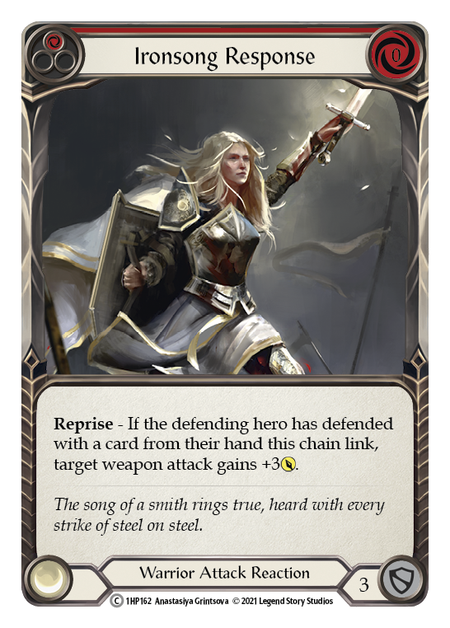
Hit and Run - Pitch 2 - Dawnblade for 3 (blocked 3) - Ironsong Response +3 - Dawnblade for 3 = 9 threatened, 6 dealt
Hit and Run - Pitch 2 - Jubeel for 3 (blocked 3) - Ironsong Response +3 - Jubeel for 3 = 9 threatened, 6 dealt
Hit and Run - Pitch 2 - Dawnblade, Resplendent for 2 (blocked 3) - Ironsong Response +3 - Dawnblade, Resplendent for 3 = 8 threatened, 5 dealt
Hit and Run - Pitch 2 - Cintari Saber (R) for 2 (blocked 3) - Ironsong Response +3 - Cintari Saber (L) for 2 = 7 threatened, 4 dealt
Hit and Run - Pitch 2 - Hatchet of Body for 2 (blocked 3) - Ironsong Response +3 - Hatchet of Mind for 3 = 8 threatened, 5 dealt
Hit and Run - Pitch 3 - Cintari Saber for 2 (blocked 3) - Ironsong Response +3 - Quicksilver Dagger for 1 - Cintari Saber for 2 = 8 threatened, 5 dealt
Hit and Run - Pitch 3 - Merciless Battleaxe for 3 (blocked 3) - Ironsong Response +3 - Pitch 3 - Merciless Battleaxe for 3 = 9 threatened, 6 dealt
And we're back to our Top 2 again.
It should be noted just how much our 'neutral' defensive block is holding back the Cintari Saber, which gets a +1 attack for the rest of the turn when it's defended by an attack action card. The math on the above line would change to 9 threatened, 6 dealt - assuming you used the same Saber for both of your attacks. Of course, Dawnblade and Jubeel both have on-hit benefits that don't care what you're blocked by, so in the end Cintari still falls behind - but it's not by as wide a margin.
The traditional mantra for a new Dori player is, "Dori's first swing needs two things: it needs to hit, and it needs go again." We've now added both of those elements to our core example, so let's leave the math there. It's time to talk about building momentum.
Working Towards Something
When building a deck, it's important to have a gameplan. Some decks simply plan to maintain a baseline punctuated by power turns that ensure 'neutral exchanges' end in their favor. Others make a constant effort to gain momentum and, eventually, push that advantage to victory. You'll find both paths available to Dorinthea - and more specifically, you'll find both paths are concurrently viable in Dawnblade builds.
Every time you swing the Dawnblade, you force your opponent to use a card to block it, or face it again - and give you value for the future in the form of a +1 counter. This is a trick that should feel familiar to Guardians: you pitch the card, while they lose the card. It's a win-win value proposition. Neutral eventually benefits you.
At the same time, Dawnblade players are always ready with attack reactions to climb over the top of blocks and force those hits to occur. When you do manage 2 hits in a turn, that +1 puts every swing on your next turn at a breakpoint 4; and now they really have to block you out, or the next turn you'll be throwing 1-for-5 value and threatening to reach 6, and so on and so forth.
Other weapons offer similar value-based sustaining strategies, but lack the threat of momentum. That is to say, they don't incentivize blocking in any meaningful way. The Cintari Sabers actively disincentivize blocking!
Without giving your opponent a reason to block, you're put in a position where you have to get more out of your cards than they do. There are a few ways to manage that, and to illustrate those I'm going to compare them to decks that epitomize those strategies.

One is by racing as Fai does: dealing more damage than you take across several turn cycles, until you force your opponent into blocking simply to survive. Dorinthea takes a similar posture when she chooses to dual-wield Cintari Sabers or Hatchets; with a second weapon, we're much more resilient to being blocked out and losing our extra weapon swing, which is essential to our damage output. Add in the near certainty of Dori holding an attack reaction, and your opponent will struggle with determining whether your first or second weapon attack is the one they should block.
The trouble here is with our value rate. You can find a thorough examination with the value issues of the Warrior class in this article from Will Reinhardt; but suffice to say, any deck that requires you to pitch to even get started is going to find itself behind rushdown decks that can use that card to attack instead. We're losing an aggro edge to most of our cards blocking for 3; that's 1 point of value every time we play a card. To make up for that, we have to rely on tricking our opponent to blocking inefficiently or incorrectly - while trying to cover for the worst kept secret of the Warrior class: that, if you can use a 4-card hand, it's often best not to block.
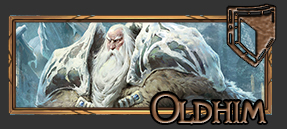
On the other side of the coin we have Oldhim, who also thrives on reactions and conserves cards via weapon swings. To impersonate Oldhim's deck conservation tactics, Dori is likely to block with 2 cards every turn cycle, then use 1 card to boost her weapon in some capacity and 1 card to pay for whatever she's doing.
This approach puts heavy emphasis on power surge turns, where we hold that full grip and steal a chunk of life in one go, putting ourselves ahead in the life cycle.
If the rushdown tactics above encourage a dual-wielding Dori, the grappler tactics of an endurance Dori aggressively reinforce Dawnblade's superiority. We need to pry cards away from them with our consistent fallback attacks, and Jubeel won't convince anyone to give up a good card!
"Grappler? Rushdown? What are these?"
Dylan Davis has been working to change the way we talk about strategies and deck archetypes in Flesh and Blood. Expect to see more of us talking about decks using terms like these as we embrace the movement toward a vocabulary that better suits our game.
In the future, I expect to see Merciless Battleaxe at the forefront of a strategy more closely tied to outlasting our opponents, with a much greater emphasis on pitch cycling. But for the moment, efforts to incorporate this strategy only serve to emphasize just how closely the Warrior class - and Dorinthea specifically - has been built around the Dawnblade.
Dorinthea's Design Space
We've had plenty of heroes whose mechanics closely align with their weapons, and that's not inherently a problem. But it does make for some rather narrow design space; and while LSS has innovated many times before, you've got to wonder just how much more can be done for Dorinthea and the Dawnblade without pushing both above a critical mass of power and efficiency. Generally, Dori enjoys a pretty low profile; but like Rhinar, it really only takes a few more key cards and the deck could absolutely pop off.
The challenge here is that Dorinthea has been painted as a central character to the story of Rathe. More than that, the Dawnblade has been portrayed as more than just a signature weapon for Dori - it is her legacy, a symbol of her past and her future. Maybe even Solana's future.
So how do we keep Dorinthea fresh without replacing the Dawnblade? And how do we continue to iterate on Dorinthea when 95% of her attacks are the Dawnblade? When a class is built around modifying an attack rather than the attacks themselves, but no other weapon enters the conversation, how do you innovate without simply escalating?
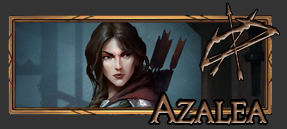
Azalea players faced a similar problem with the Death Dealer. The class felt designed around both its drawbacks and strengths, to the point where other bows had been unable to give it any real competition. What finally got through was the Sandscour Greatbow and its use of aim counters, along with a host of arrows that skirted the issue of becoming too strong with Death Dealer by requiring those aim counters.
But with Dorinthea, it's different. Azalea's ability had little to do with the Death Dealer, so nothing inherently tied them to one another. Furthermore, Azalea's lore does little to tie her identity to any particular weapon. Her personality feels perfectly suited to picking up whatever gets the job done. Were Dorinthea to leave the Dawnblade at home, it would feel symbolic of walking away from who she was and where she came from.
So perhaps it's not the weapon that needs to change. We could get a new version of Dorinthea that changes the gameplay experience. We've seen it already in Classic Battles - though it essentially replicated the same play patterns in a new-player-friendly package. The interplay between Dawnblade and Dorinthea would likely require a new Dawnblade as well, though they could certainly get creative - perhaps focusing on the +1 counters, utilizing them in creative fashion instead.
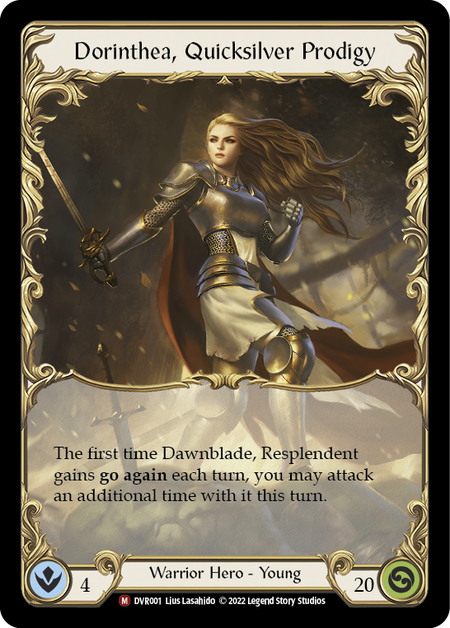
But as things stand now, it's hard to imagine where Dorinthea could go next. It's nearly certain she'll carry the Dawnblade with her as she goes, and that means we can expect the same strategies to dominate her builds. Strategies that players have been learning to counter since Welcome to Rathe: overblock, or don't block at all.
We're due for a revitalization.




